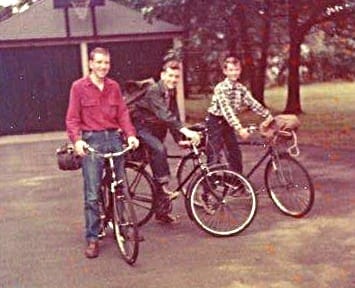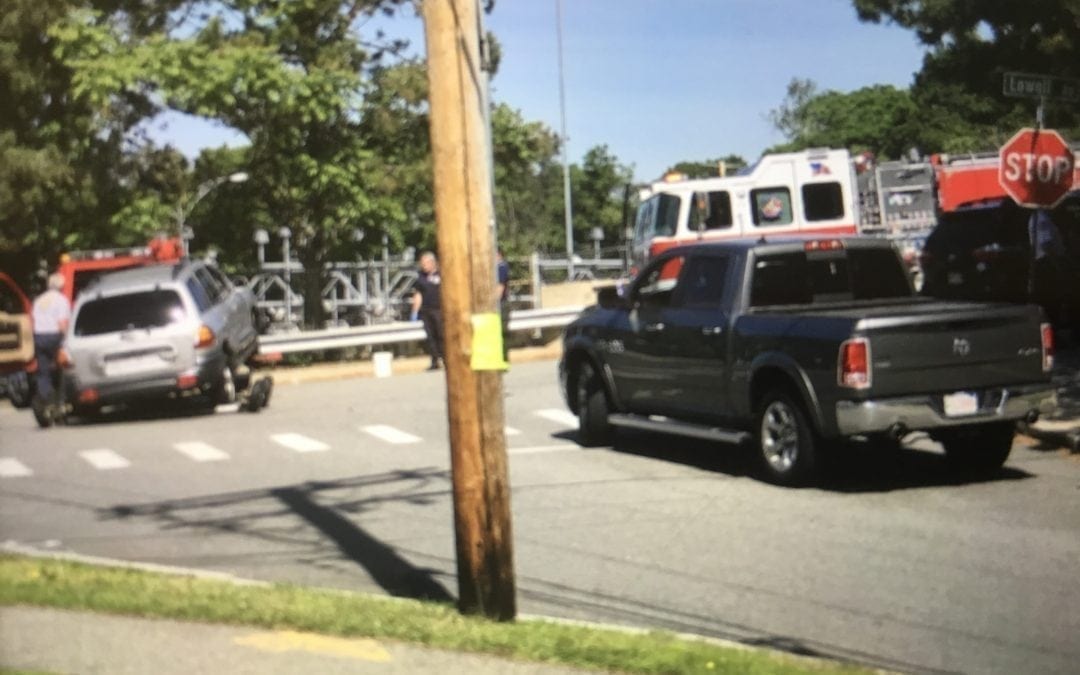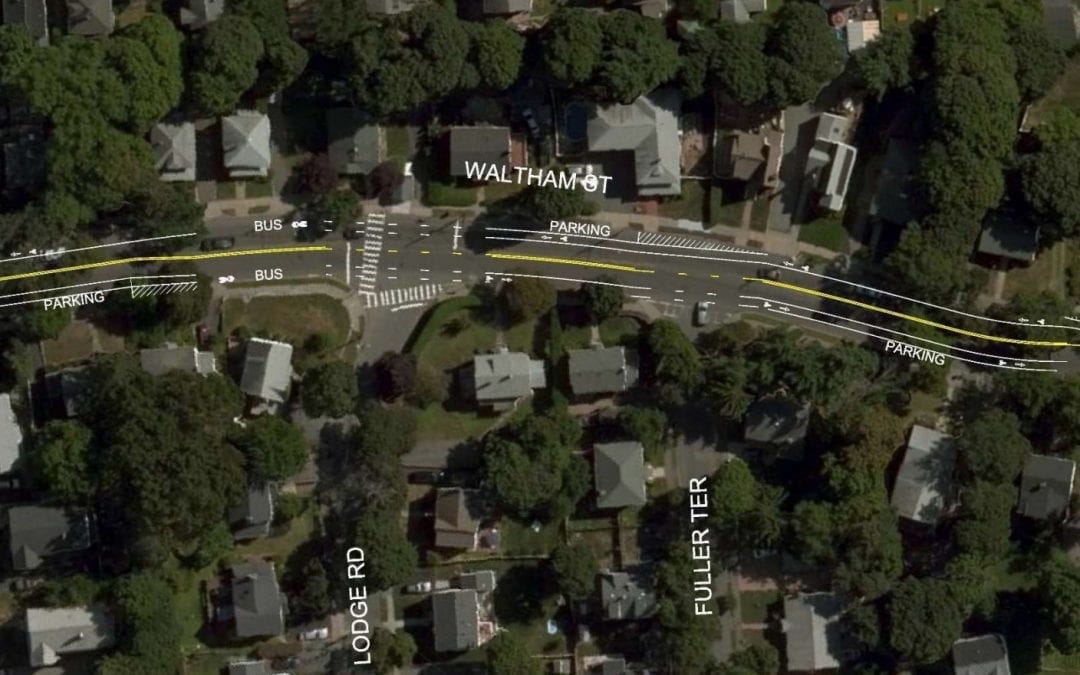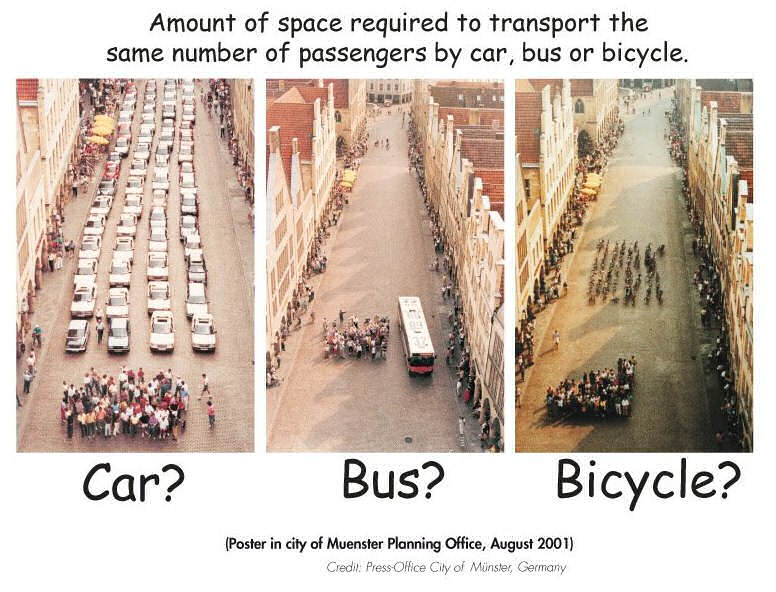


Another Accident at Austin Street and Lowell in Newtonville
There was another accident at the intersection of Austin Street and Lowell this morning around 9:00. A grey SUV was on Austin Street either going straight or turning right and a maroon van was going straight on Lowell. The van’s front right side hit the SUV’s front...
First in the City: Parking Chicanes Proposed for Waltham and Crafts
Those of us who live near Waltham and Crafts Streets know that this is a bit of a conundrum. During the morning and evening rush, the road is a clogged mess with cars, pedestrians, and bikes fighting for position. This is especially true when students are headed to...Northland traffic consultant provides overview of proposed project
The Newton Upper Falls Area Council hosted a meeting May 17 that included a presentation by the developer of the proposed Northland Development on Needham Street. At the meeting, Northland’s traffic consultant provided an overview of the project’s approach...Close Shave: Where can we shave streets for parks and pedestrians?
When looking through the collaborative zoning map recently I was struck by a comment in my neighborhood. Someone had suggested turning a stretch of Albermarle Rd., which has no driveways, into parkland. It made complete sense since the one-block road is unnecessary. In fact, a few years ago the city made the left-hand turn there illegal because people were using it as a way to avoid a traffic light.
This also came to mind when I watched the video about Washington Street and saw how changes in the street can take are
Newton Ranks 5th in Ride Hailing in Massachusetts
Some interesting numbers came out earlier this week around ride hailing apps. As WBUR points out, the top three Massachusetts cities account for 70 percent of all ride hailing trips in the state. Still, with more than 1-million trips Newton ranks 5th, right behind...How Uber and Lyft are taking a toll on Newton
Automated vehicles are coming. This is not something we can stop. People want them, companies are developing them and most agree that at some point in the next 10 to 20 years, they will become the dominant vehicles on the road. What form they ultimately take is still...Automated Vehicles: When Cheap Becomes Free
Given the lively discussion we had the last time I posted about automated vehicles, I thought it a worthy topic to continue. Over on CityLab is a fascinating article by Judith Donath about how transportation could end up being subsidized by people who want to move...How do you get to work?
This is a rare thing. I normally don’t post about things that relate to my job as the Director of the N-Squared Innovation District, but this one does have a strong local impact. The 128 Business Council, which operates shuttles to office parks in the area, is...
Should Newton consider bus only lanes and traffic lights?
Four communities have just received a grant to “test ideas like bus-only lanes and traffic signals that give buses priority at busy intersections,” the Globe reports today.
According to the foundation, Arlington will use the money for its one-month test to improve service on Massachusetts Avenue during the morning rush, which could include a bus-only lane. Cambridge and Watertown are planning to create all-day bus lanes on parts of Mount Auburn Street. And Everett, which already sacrificed a lane of parking for bus-only traffic in 2016, plans to make two stops on that route easier to access for wheelchairs and strollers.
All four communities also plan to test “transit signal prioritization” on these routes, technology that lengthens green lights and shortens red lights depending on how near or far a bus is from an intersection.
Is this an idea that should be tested in Newton and, if so, where would you suggest putting these bus only accommodations?
A vision for the Washington Street corridor
Jeff Speck recently presented his vision for the Washington Street corridor to the Newton-Needham Chamber, building upon the recent plan for West Newton Square, extending through Newtonville towards Newton Corner. The main theme is a road diet. By eliminating underutilized roadway, Newton could create a far more attractive streetscape, open up new opportunities for recreation, transportation safety improvements, public transit, and yes, development.
A road diet might even improve traffic conditions, channelling traffic and eliminating conflicts that come with vehicles changing lanes. A two-way cycle track along the pike could provide top-notch bicycle facilities The idea of a road diet and cycle track along the pike is not new; it has been the subject of previous studies and TAG has been pitching it for several years now. With
